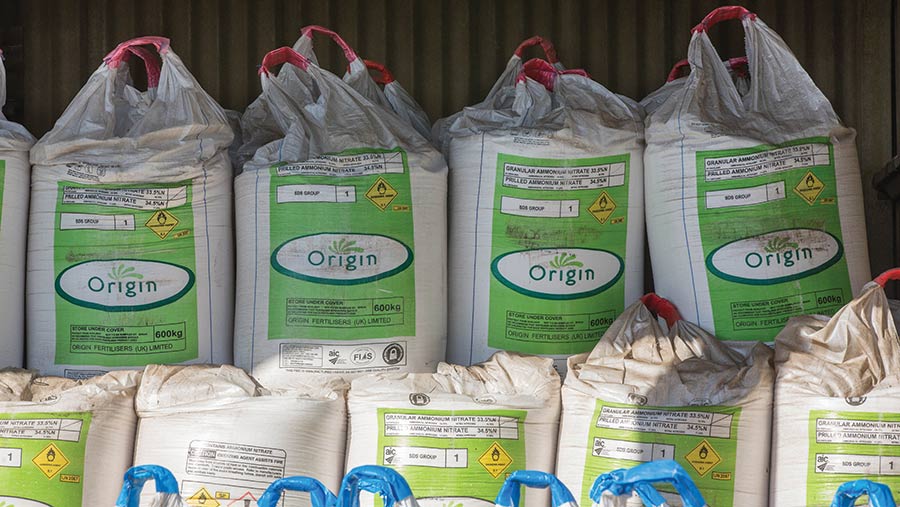Rule reminder – how to store fertiliser safely
 © Tim Scrivener
© Tim Scrivener The use of ammonium nitrate (AN) fertiliser is commonplace on British farms, but it is important to be clear about where and how it should be stored.
AN fertilisers are a risk as they are oxidising agents, which means they can accelerate the combustion of other materials, even if air is excluded.
Under the right conditions, such as heat or confinement, they can also explode – making them appealing to terrorists for use in home-made explosives.
See also: Rules for legal storage of pesticides on farm
There is an industry-adopted five-point storage plan that sets out the main guidelines:
- Buy from a Fertiliser Industry Assurance Scheme (FIAS) approved supplier
- Keep in a secure area such as a building, or sheeted, away from public view
- Carry out regular stock checks and report any losses to the police immediately (using 101)
- Avoid leaving fertiliser in a field overnight and never leave in the field for a long period
- It is illegal to sell ammonium nitrate without the correct documentation.
Safe storage
When storing fertiliser in a building, Health and Safety Executive advice is:
- Fertiliser should be clean, dry, well-ventilated and made of fire-proof materials such as bricks, concrete or steel.
- The floor should also be free of any sharp objects.
- Stacks should be no more than three bags high, with bags interlocked for stability.
- No stack should be more than 300t, with a 1m gap between stacks.
- There should also be a distance of at least 5m between a stack and any hay, straw, grain, feedstuffs to act as a firebreak, or a barrier made of an inert material that is at least 1.5m wide.
- There must be no smoking or naked flames.
- Where it is not possible to store fertiliser inside, it should be kept in a level, secure area to stop unauthorised access.
- The bags should be stacked on pallets to avoid it touching the ground and the stack fully sheeted.
Fire service
Tom Price, NFU farm safety adviser, says most of the guidance is common sense and given that fertiliser is an expensive product, it also makes good business sense to make sure it is stored as safely as possible.
Areas that are sometimes overlooked include the need to report to the local fire service and HSE if more than 25t of AN fertiliser with more than 28% nitrogen is being stored.
This is important if there is an emergency because the fire service will then be aware there is a dangerous substance on the premises.
Further details of how to notify the authorities are available on the HSE website.
Farmers should also display a sign on the outside of any building storing fertiliser that warns there is an oxidising agent inside to alert the fire service.
.At access points on to the farm, there should also be a general warning sign that a dangerous substance is stored. You don’t advertise that it is fertiliser, which may tip of thieves, but you do need a general warning.
Preventing thefts
There is detailed guidance from the National Counter Terrorism Security Office (NCTSO) about preventing thefts on the Secure Your Fertiliser website.
The NCTSO says farmers need to think about:
- restricting access to the fertiliser or the building where it is stored
- ensure any trespasser would be visible if they carried out a crime
- making the site as resistant as possible to criminal activity
Simple preventative measures include covering fertiliser with a tarpaulin if it is in an open-sided barn and removing hedges or bushes around the property that might act as a hiding place.
Other suggestions include installing alarms, CCTV, anti-intruder fencing, gates with anti-lift hinges and security lighting.
More safe storage information
INDG230 Storing and Handling Ammonium Nitrate (Health and Safety Executive) (PDF)
